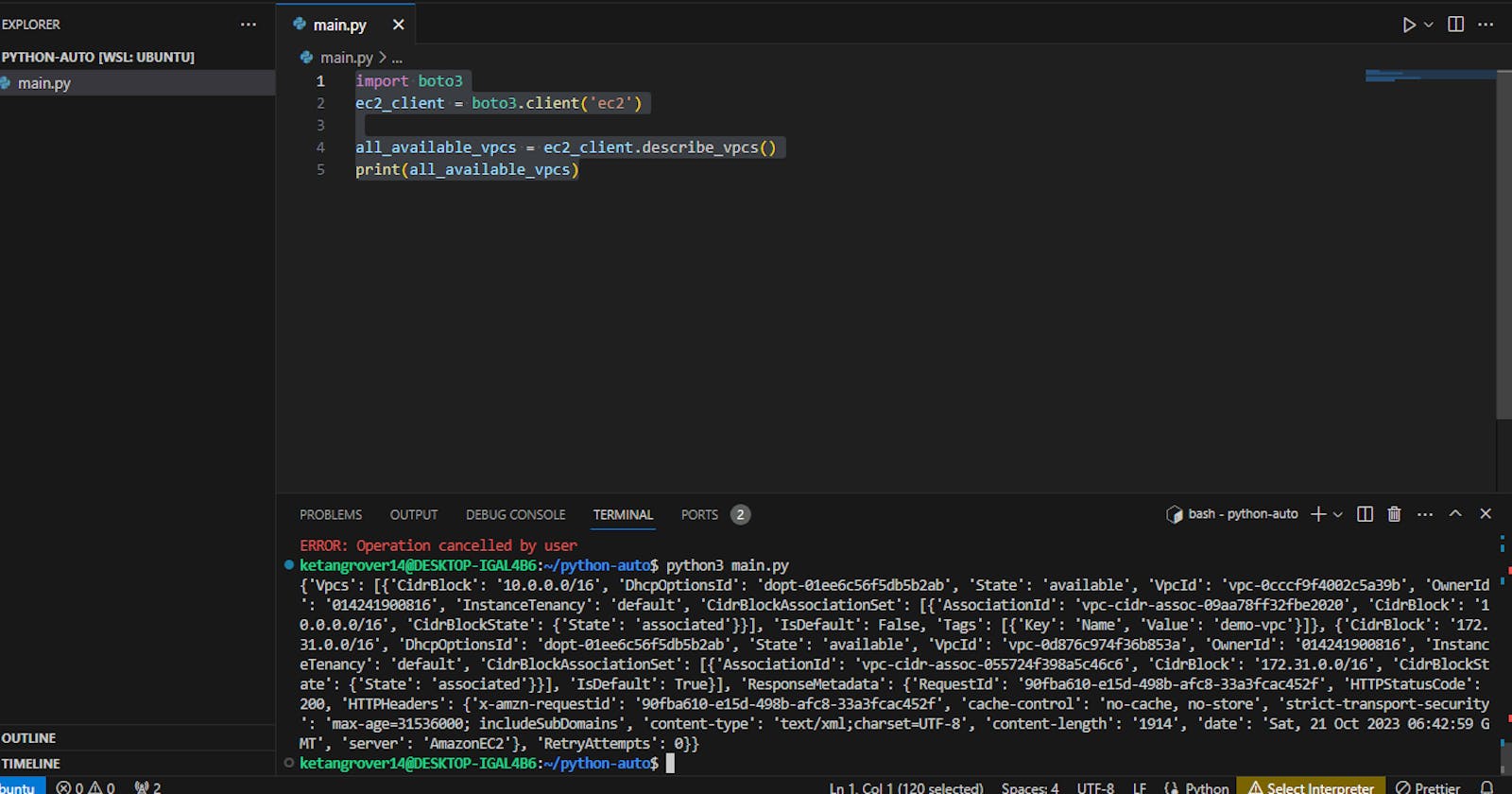PermalinkBoto3: Introduction
Boto3 is the AWS SDK for Python, which provides APIs to interact with AWS services. It has the following key features:
PermalinkResource APIs
Boto3 has two types of APIs:
Client APIs: Low-level APIs that map to HTTP operations.
Resource APIs: Higher-level APIs that expose resource objects.
The resource APIs make the code more Pythonic.
for i in ec2.instances.all():
if i.state['Name'] == 'stopped':
i.start()
Here we are using the EC2 resource API to start stopped EC2 instances.
PermalinkUp-to-date Interface
Boto3's interfaces are dynamically generated from JSON models of AWS APIs. This allows Boto3 to quickly update as AWS services change.
PermalinkPython 2 and 3 Support
Boto3 supports both Python 2.7+ and Python 3.4+.
PermalinkWaiters
Boto3 has "waiters" that automatically poll for status changes in AWS resources. For example, you can start an EC2 instance and use a waiter to wait until it reaches the "running" state.
PermalinkService-specific Features
Boto3 has features tailored for specific AWS services, like:
Multi-part uploads for Amazon S3
Condition expressions for Amazon DynamoDB
In summary, Boto3 provides:
High-level resource APIs for a more Pythonic experience
Up-to-date interfaces that align with AWS API changes
Support for both Python 2 and 3
"Waiters" that make waiting for resource status changes easier
Service-specific features that simplify using individual AWS services.
PermalinkInstallation
PermalinkInstalling PIP
Pip is the package installer for Python.
sudo apt update
sudo apt install python3-pip
PermalinkInstalling Boto3
Boto3 is the AWS SDK for Python, which provides APIs to interact with AWS services.
pip install boto3
PermalinkAWS CONFIGURE
Now, to connect Boto3 to AWS we need to do some configurations and setting up some credentials
aws configure
Here, you need to add your credentials for the AWS account and you can find those credentials in the AWS account settings
AWS Access Key ID [****************5OX7]:
AWS Secret Access Key [****************LM6b]:
Default region name [us-east-1]:
Default output format [json]:
PermalinkMini Project
Now, in our mini project, we will describe the list of all VPCs available in our AWS account First we will create a new folder in which we will write some Python code for describing VPCs
Now after successful Installation create a new folder and open it on your favourite code editor in our demo we will use VS Code
mkdir python-auto
cd python-auto
#to open vs code editor
code .
Now create a new file main.py and paste the code inside the file
import boto3
ec2_client = boto3.client('ec2')
all_available_vpcs = ec2_client.describe_vpcs()
print(all_available_vpcs)
Now, if you open vs code terminal and write:
python3 main.py
all the active VPCs will be printed inside your terminal

Now if you want to get a specific parameter of vpc like CIDR block, VPC ID, owner ID, etc we can do that using for loop
import boto3
ec2_client = boto3.client('ec2')
all_available_vpcs = ec2_client.describe_vpcs()
vpcs = all_available_vpcs["Vpcs"]
for vpc in vpcs:
print(vpc[VpcId])
Now, if you again run the file you will see that VPC Id will be printed inside your terminal
That's a wrap................................
